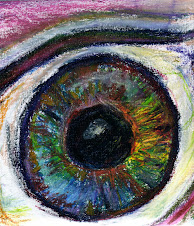Monday, November 8, 2010
What does a math worksheet tell you about vision?
Many elementary school math worksheets are arranged in rows and columns. The expected approach is for the student to start at the top row with the first problem on the left and work across the row solving each problem in turn until there are no more remaining. Then the student should move onto the first problem at the left side of the second row, continuing in this manner until the last problem, located at the right margin of the bottom row, has been solved. Then, the paper is ready to be checked, corrected as needed, and handed in to the teacher. If, however, the teacher receives a paper that has a haphazard amount of problems solved and the student asserts that they, indeed, have been careful to do each problem, you can predict that the student may need to have an extensive eye examination by an eye doctor who is skilled in evaluating binocular vision development in children. A haphazard approach to this kind of worksheet is consistent with a saccadic deficit, a condition that relates to the child's ability to control their eye muscles and a problem that can be addressed in vision therapy and, as an extension of the same, with the Purple Book of the Eye Can Too! Read series of e-books that I wrote. Intervention should start with a thorough eye exam by an eye doctor.
Subscribe to:
Posts (Atom)




